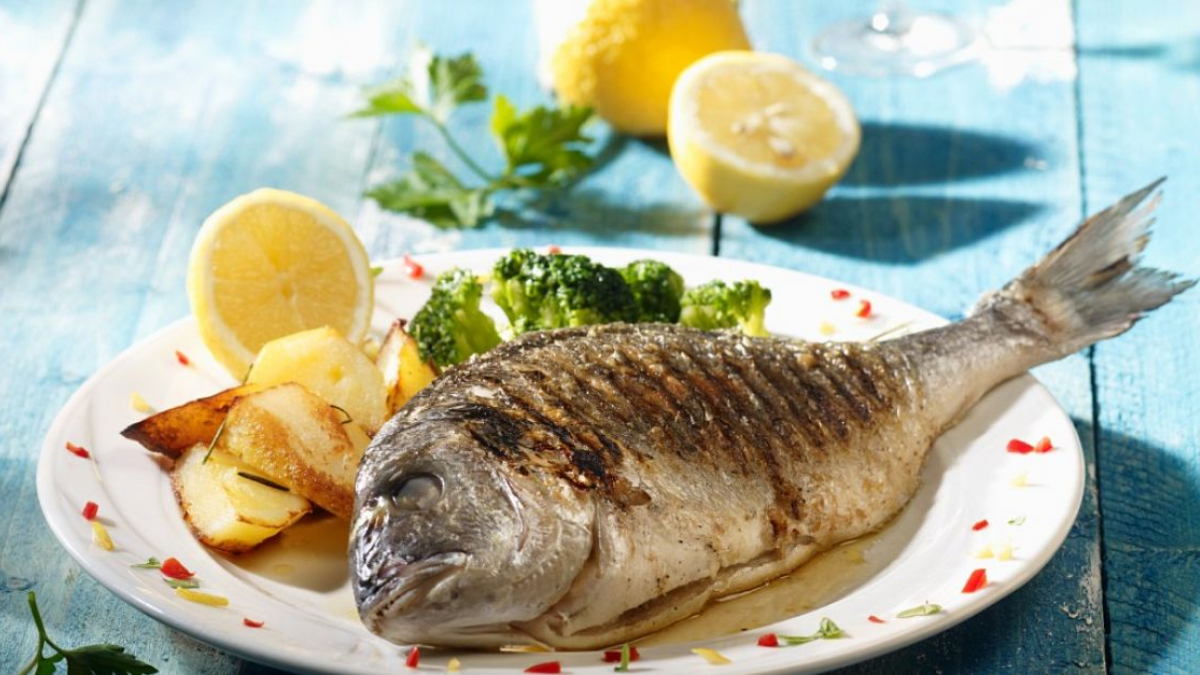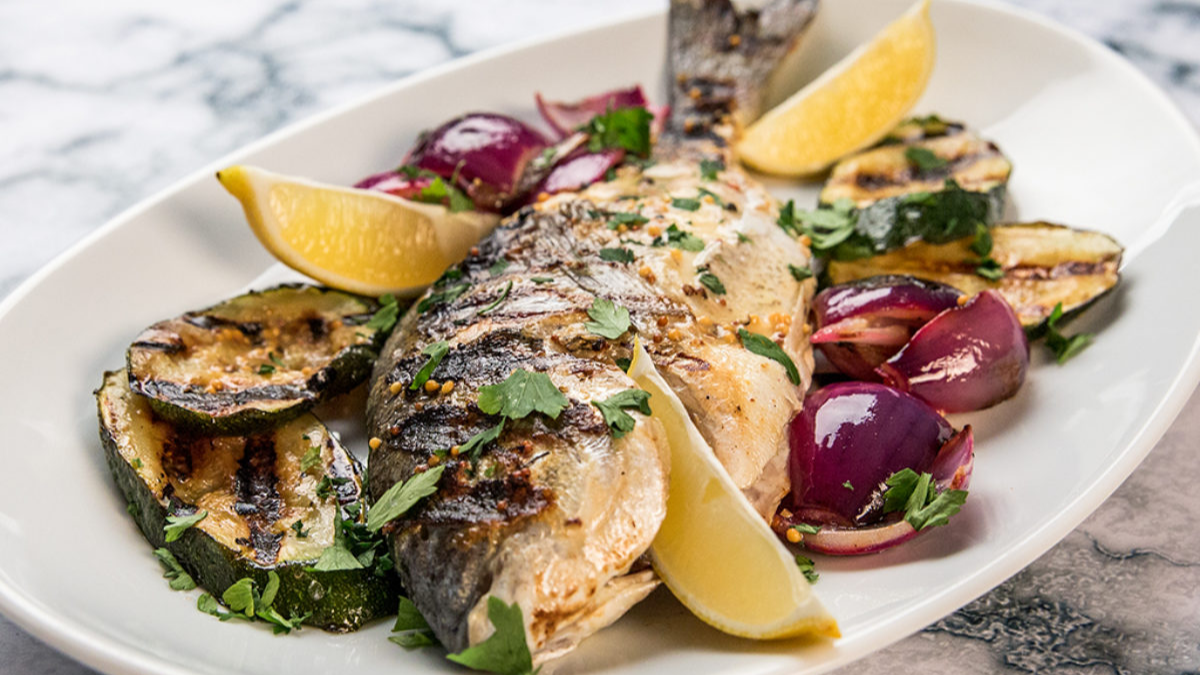Sea bream is a fish species that is commonly underappreciated and even entirely ignored when it comes to cooking and eating. Although they are typically not considered to be very stylish or tasty, they might nevertheless be a touch pricey to purchase from supermarkets compared to other species of white fish. This article focuses on the ideal methods for preparing sea bream.
Many different fish species, particularly in Europe, are highly well-liked for eating. These species occasionally referred to as sportfish, are still highly common throughout most of the world despite being widely used as food. They are prized for their mellow, white meat, which is thought to be the tastiest of any white meat fish.
What is Exactly Sea Bream?
The marine sparid fishes include these fish. The family Sparidae is also referred to as the porgs. These fish have easily recognized thanks to a few distinguishing characteristics. First, they have rather flat bodies. Particularly when viewed in profile, the face of the fish seems flattened due to the line’s quick descent from the dorsal region to the front of the fish.
The body type of the sea bream is what makes it unique. Their color varies greatly from species to species, primarily based on the environment and type of water. For instance, fish in brackish environments are typically darker, with black and gray hues to help them blend in with their surroundings. To demonstrate how different the family can be, some fish even have a bright red look in other regions. Many species have large, flat front teeth perfect for breaking tiny clams and crabs.
How to Cook Sea Bream Fish?
It’s quite simple to prepare. Likewise, you don’t require a lot of components. Just a little good olive oil, a couple of lemons, some parsley, salt, and pepper. I’m done now! And of course, the sea bream.
Ingredients
- 2 Whole sea bream -degutted and cleaned. Ask your fish supplier for this
- 4 Tbsp olive oil
- 2 Lemons– cut into slices
- 2 Sprigs parsley
- Salt & pepper
Steps of Preparation
- Preheat the oven to 200 °C
- Put the sea bream for 5 min in cold water to soak
- In a small bowl, whisk together the oil & salt and pepper
- Take the sea bream out of the water and pat it dry with a paper towel
- Take an ovenproof ceramic dish(you can also use your oven tray) and brush some oil mixture on it
- Cut three times on the skin of the sea bream on each side using a sharp knife
- Cut the lemon into slices and place them with some parsley inside your sea bream
- Brush the sea bream with the olive oil and add the remaining lemon on top
- Place in the oven and bake for 20 minutes
- enjoy!
What are the Different Ways to Prepare Sea Bream?
Here are the different ways to prepare sea bream:
Sautéed
In a skillet, heat the olive oil over a high flame. If you’re using fennel or garlic, add it when the oil is heated and sauté until the fennel or garlic starts to pop in the pan.
Reduce the heat to medium-high after adding the bream fillets. Sea bream should be sautéed for two minutes with the skin side down. With the spatula, flip the steaks, and sauté the other side for a further minute. The sea bream fillets will be completely opaque when prepared for serving.
Remove the fillets from the pan and season with salt and pepper. Serve the fillets hot with lemon wedges and top with parsley.
Broiled
Set the broiler to high. To keep the fillets from sticking, lightly oil the broiler pan.
The skin-side-down sea bream should be placed on the broiler pan with the fillets covered with lemon juice. To taste, add salt and pepper.
Sea bream should be roasted for six to eight minutes. Fillets should not be turned. After removing the broiler pan from the oven, the fillets should be topped with parsley. Sea bream should be served hot with lemon wedges on the side.
Baked
Turn the oven on to 200 degrees. Bakeware should be covered in olive oil.Sea bream fillets should be placed in a baking pan, rubbed with garlic, and then seasoned to taste with salt and pepper.
Sea bream should be baked for 10 to 15 minutes, rotating once, or until the fillets become opaque and are thoroughly cooked.
After removing the baking dish from the oven, top the sea bream fillets with the parsley. The fillets should be served hot and garnished with lemon wedges.
What to Eat with Sea Bream?
A great filling supper rich in nutrients can be made with sea bream fillets. Similar to cod, bass, or snapper, sea bream is a healthy type of white fish.
There are several dishes you can pair with sea bream. As a form of white fish, sea bream can be eaten with any of your standard go-to side dishes, including those you enjoy with cod, bass, or snapper. Usually, roasted Greek potatoes, rice pilaf, or grilled vegetable skewers go well with sea bream fillets.
A straightforward side of grilled or steamed veggies is a wonderful option with sea bream, and these sides will enhance the delicate fish flavor without dominating the meal. If you want to cook sea bream fillets in oil, you can serve your fish with french fries for a hearty supper.
The advantages of eating sea bream are innumerable. Fish like sea bream are abundant in B vitamins but low in calories. They provide a good amount of omega-3 fatty acids. Omega-3 fatty acids can lower blood pressure, bad cholesterol, heart attack and stroke risk. Omega-3 fatty acids are high in protein, include nutrients that can strengthen your immune system, and are also recognized to be good for your hair and skin.
Where to Find Sea Bream?
Depending on the species, sea bream can be found in oceans all over the world and in a variety of water temperatures. Some people do favor warmer or colder waters in particular. They are well known as food fish in many civilizations, especially those that are located near oceans, due to their widespread distribution.
European Sea Bream
The European sea bream, technically known as Pagellus centrodontus, is arguably the most popular fish species in its class. The color of this fish is primarily silver, but depending on the individual, it can also have hints of red and yellow. It is frequently observed in the seas surrounding Europe and is regarded as a temperate-water fish since it prefers cool but not freezing-cold water.
Western Atlantic Sea Bream
Several species can also be frequently found off the shores of the United States, the Caribbean, and the western Atlantic. These include the fish known as the sheepshead and the western Atlantic sea bream (Archosargus rhomboidalis). Both are typically found in locations with many covers, including reefs and beneath bridge pilings, and both enjoy subtropical seas.
Benefits of Sea Bream
Here are the health benefits of sea bream:
- Sea bream is not oily, although it has a superior fat ratio to other white fish. Additionally, it is regarded as a trustworthy source of omega-3 fatty acids.
- These fatty acids have various positive health effects, including lowering blood pressure, improving cardiovascular health, reducing inflammation, and reducing mental health problems.
- A superb source of important proteins is sea bream. It has more fat, but it also has more of the vitamins E and D. To preserve the vitamin E content of the fish, you might poach sea bream and combine it with boiling green beans.
- It is a great option for overweight people because it has few calories and contributes much to a balanced diet.
- Its high iron content prevents excessive iron deficiency anemia, whereas phosphorus is important in energy production, muscle function, and even the brain system.
Pay Attention to Freshness When Buy any Fish
Here are some important points to keep in your mind while buying any fish:
- The fish should be almost odorless, at most smelling of the sea or iodine. The older a fish, the fishier it smells.
- A shiny, firm and elastic surface appearance is a sign of freshness.
- The condition of the eyes reveals a fresh fish with bulging, bright and translucent eyes. Duller, flatter and greyer eyes indicate an older fish.
- The inside of the gills should be bright red and shiny. The more yellowish/brownish or, the more detached they are, the longer ago the fish was caught.
- If possible, press down firmly on the skin with your index finger. Fresh fish is firm and springs back to shape as soon as you remove your finger, leaving no indent. Flatfish species should not flop when picked up.
- Ideally, your retailer should store fish in ice, not on the ice, so it is evenly cooled.
Conclusion
One of the sea’s sparid fishes is the sea bream. These fish are easily recognizable due to their numerous distinctive qualities. The line moves quickly from the back of the fish to the front, giving the sea bream’s face a flat appearance. The most common variety of sea bream fish is the European sea bream. The majority of sea bream is silver in color, while some may have yellow or red streaks.
It is a temperate-water fish that often inhabits the seas that surround Europe and prefers cool but not extremely cold water.Sea bream has a lot of small bones; thus, it is safer to buy larger quantities because they have excellent flesh-to-bone ratio and are therefore much simpler to debone. Cut through the thickest part of the fillet with the tip of a knife to check if the fish is done.
The simplest method to determine whether your fish is fully done is to insert a fork into the thickest part and gently twist. When finished, the fish would easily peel off and lose its transparent aspect. A decent recommendation is to cook the fish until it reaches a core temperature of 140–145 degrees.

